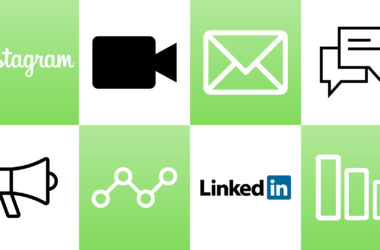Cold calling is far from dead!
If anything, cold calling is a legendary tactic. Pick up the phone and just call your prospect – it’s just the way you do it that matters.
Firstly, cold calling is extremely important when it comes to generating leads. Some stats include:
- Calling prospects after they open an email can increase your success rate by 32% [Yesware]
- 30–50% of sales go ahead with the vendor that responds first (the fastest way to respond is on call) [Fronetics]
- If you contact a prospect through cold outreach with a referral, chances are they’ll convert 30% better than leads generated from other marketing channels [Invesp]
Let’s break this answer into three parts:
A. Pre-cold calling
B. Cold calling strategies & tips
C. Post cold call follow up (to maximize your effort)
A. Pre-cold calling:
The best things to do before calling your prospect is to make sure you have verified direct dials.
I can safely say that cold calling is one of the best ways to approach your prospect. I know cold calling has been called intrusive, too direct and that it doesn’t work a lot. Well, I must say if you use the right tactics, it WILL work! There is no doubt about it. Before I begin I hope you know who your ICP (Ideal customer profile) is and in case you don’t, do check out this article: How to identify your ideal customer profile.
Good cold calling tactics I’m positive you will find results with are as follows:
Research before calling: I can’t express this point enough. You need to know:
- Who you are calling
- What that company does and
- Any intelligence you can gather about their tactics
Lead scoring – You don’t want to reach out or recklessly engage with the wrong leads. Thing is, they will say “no” regardless if you drive them from the awareness stage all the way to the decision stage. Problem is even if they end up buying, these leads turn out to misunderstand your product and won’t get that benefit you wanted them to get. End result: you’re de-marketing yourself and your company. For this reason, always score your leads.
Read more on: Lead Scoring 101: What is it all about and who is it good for?
B. Cold Calling:
- Ask the prospect “How have you been?”: Gong.io conducted research where they analyzed 90,380 cold calls. The research was focused on understanding what drives conversations. Let’s be honest, most cold callers fail at this point. The study found that “How have you been?”, topped various other opening lines that they tested. You need to read the article here, it’s one of my favorites. The image below basically summarizes what you could expect:
3. Say “You” More and “We” Less: This is obvious and no study needs to prove this point. Before starting your cold calling campaign, you need to ask yourself what you would like to hear. Would you like a sales rep to call you, only to talk and boast about himself and/or his company most of the time? I doubt it. You may feel a connection between point 1 and this point and you are right. If you don’t know about your lead or what they do for that matter, then how can you talk about them?
4. Know when to talk and when to listen: When you are talking to a prospect, if they are in a talkative mood (which does happen), then simply hear them out. In fact, encourage it. A good cold caller always learns from what they hear and adapt their responses likewise. For this reason, if you learn to listen to your prospect more, you will get a better chance of not only adding your point of view after he/she is done but you will also have that golden moment to convert the prospect into a warm lead/trial user/or even a customer.
5. Ask for another time to follow up if the prospect is not interested: If the prospect feels the product is not a good fit, simply ask them if this is something they are willing to explore in the future. If not even that, they would most likely tell you why as well (so you’ll learn and get a takeaway from the call anyway). We all know that an over the head and tentative answer received by the prospect like for e.g. “yes, we could discuss this in the next quarter”, seems generic. Trust me it’s not and don’t assume it to be. Most conversions are thanks to follow-ups and not initial contacts.
6. Thank the prospect for their time: Another basic point here is to thank your prospect for giving you their valuable time. The last impression might be your prospects first consideration if they do decide to come back to you.
C. Post cold call follow-up:
- Send an email and call when they open the email:
It is aggressive, but that’s what outbound is all about.
2. When you set a meeting, keep your calendar open and send the meeting invite while on call:
This doesn’t work well for all audiences, but has been a super productivity hack for others. Give this a try and test out your outcome.
3. Target other decision-makers after no response for a few days:
Try to target multiple employees from the company to maximize your chances of staying on top.
4. Facilitate with LinkedIn targeting or ABM style ad targeting:
If you believe the account you’re targeting is really worth the effort and expense, go for ABM and invest in account-based ads that will show only to your target audience.
Now that you have a guide on the major three stages of cold calling, I’d suggest that you also read 6 ways to get past the gatekeeper with ease.
Cloudlead has to date processed over millions of leads and verified direct dials for our global clients. What’s more, we love watching our clients grow with the power of leads backed by human intelligence. Request your super targeted list here today.
Note that I wrote this answer originally on Quora and have republished it here with a few edits.









